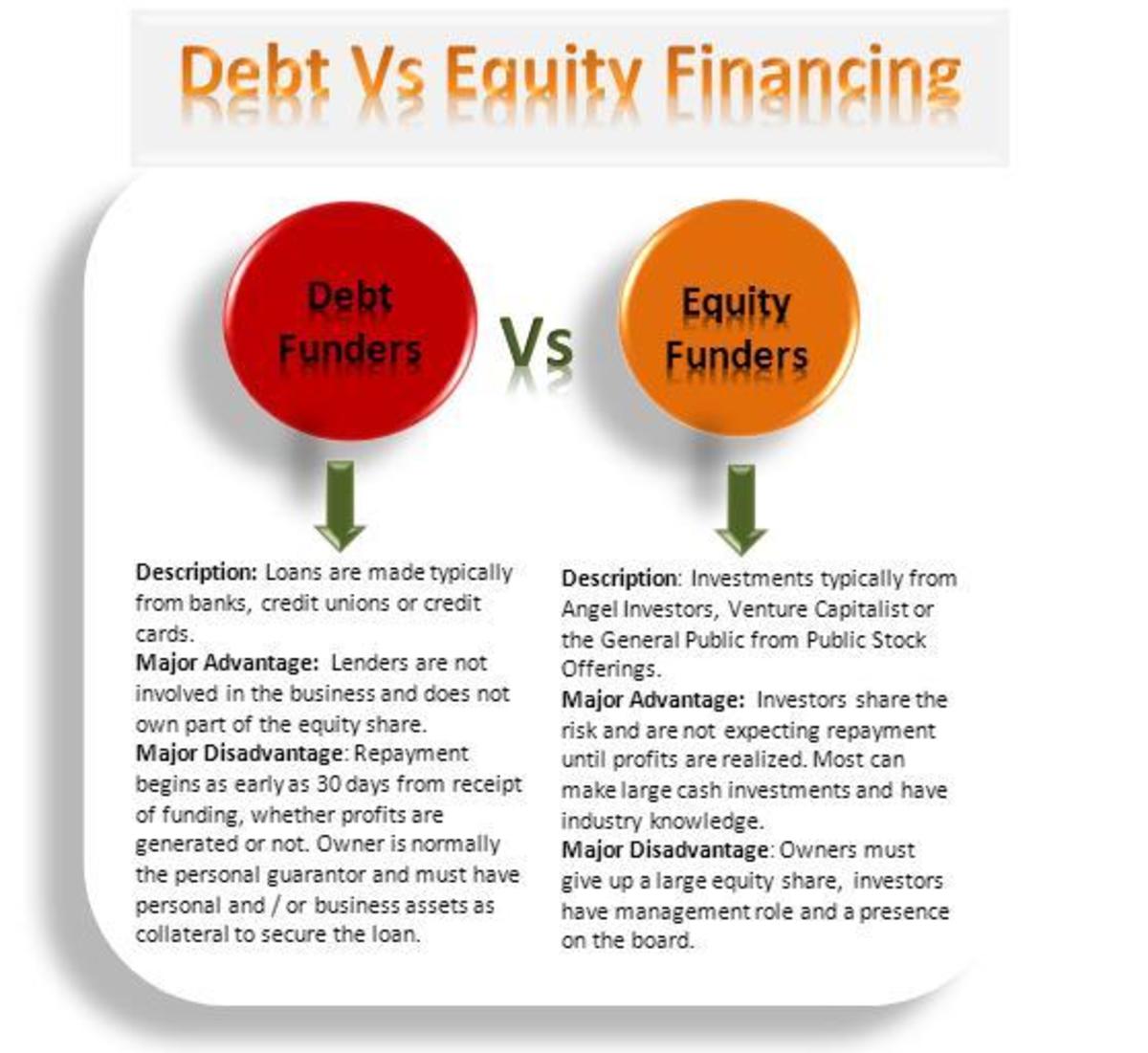Capital Equity Structure-Common Stock and Shares
Capital Structure
Common stock is sold by the company's investment banker to the public. The sum of money received by the company for the stock issue is divided between capital stock and additional paid in capital. The price of the common stock issued is determined by the available supply of stock and the public's willingness to purchase the issue.
Amount in capital stock = par value of issued stock
The amount set aside as capital stock represents the common share's par or stated value, which is an amount specified in the articles of incorporation that must be received for the stock. Par value is a legal creation designed to ensure that an investor purchases shares with some monetary value.
Preferred Stock
A company may also issue preferred stock, rights, and warrants. Preferred stock is a hybrid security with debt and equity features. It is “preferred” because it has a claim to assets and dividends preceding that of common shareholders, although it is still subordinate to the claims of creditors.
While the fixed dividend payment, unlike an interest payment, isn't tax deductible, the preferred stocks cost of capital to the corporation is often lower than the issuance of debt or new equity. There are also tax advantages to corporate owners of preferred stock that foster its issuance.
While dividends may be cumulative or non cumulative, a cumulative dividend is typical. In this case, if a dividend is “passed,” or not paid, the preferred shareholders usually have the right to elect a member of the Board of Directors. They also have the right to payment in full of all dividends in arrears before common shareholders are entitled to receive dividends. Preferred stock may also be callable and / or convertible into common stock.

Rights and Warrants
Rights and warrants are another type of equity security issued by the company. As a side note, technically, rights and warrants possess the same economic characteristics as options. Options however are contracts between two individuals, whereas rights and warrants are issued by the company.
Based upon the pre-emptive right, rights grant shareholders the opportunity to maintain their pro- rata interest in the corporation. Rights are issued to existing shareholders, are transferable, have a limited and, often, short life, and usually permit the purchase of additional shares at a discount. The discount is offered to ensure the success of the share's sale to the public.
Warrants are sold for cash or attached to another security, typically a bond, to enhance its attractiveness to investors. They are transferable, have a limited life, although longer than rights, and are usually convertible into common stock at a premium to its current market price.
The value of the “option” is dependent upon the market value of the common stock, the conversion features of the right or warrant, and its time to expiration. More detailed information on this concept can be found in a later hub.
What do you know?
view quiz statisticsCorporate Finance Function
Now that we have learned some basic definitions, we will examine the corporate finance function in a corporation, specifically how the company raises equity funds to finance operations or new investments. The corporate finance function encompasses decisions regarding capital structure, capital budgeting, and working capital.
Capital Structure deals with the investment, by creditors and shareholders that supports the on-going business of the company.
Capital structure includes the decision to issue new debt versus equity, or the issuance of warrants with bonds. Let's drop in on a corporate treasurer discussing this function.
"As treasurer of Future Firms, Inc., my decision regarding capital structure generally involves the acquisition of funds, that is, “capital” for growth. Both debt and equity have a cost. In making the decision to issue debt or equity, I must balance the need for current and future funds, the out-of-pocket cost of debt or equity, that is, interest versus dividend payments; with subjective issues such as dilution of management’s, and shareholder’s interest in the corporation."
"Leverage, that is, the amount of debt supported by our investors' capital, impacts our investor's rate-of-return. Factors influencing our use of debt instead of equity include our level and consistency of earnings, capital intensity, and maturity. In this industry, like most mature ones, our capital structure is similar to that of our competitors. Ultimately the market determines our optimal capital structure."
Capital Budgeting deals with the allocation of corporate resources to long-term, capital projects.
Capital budgeting includes an analysis of whether to buy or build a new manufacturing plant, lease or purchase a new piece of equipment. Let's drop in again to a corporate treasurer who is discussing this function.
"As an employee of a company, you’re probably aware of the annual “budget ritual.” A key aspect of my job as treasurer of International Concepts is the allocation of resources such as our investment in new property, plants, and equipment. Our company has many investment and spending opportunities for the future to consider. Therefore, I established a cost-of-capital “hurdle” or minimum projected rate of return that a project must exceed in order to be funded. The capital budgeting process ensures that we maintain an overall rate-of-return that enables us to meet existing obligations, provide a competitive rate of return to our shareholders, and attract new investors when the need for funds arises."
Working Capital deals with the decision whether to reinvest or distribute cash to shareholders
The working capital or cash generated by the firm’s operations can be reinvested in the business or distributed to shareholders as dividends. Let's listen to another treasurer discussing this function.
"As treasurer of Graphic World, the working capital decision is critical. The decision to retain, rather than distribute, cash implies that we can reinvest it at a higher rate-of-return than a shareholder could in other investment opportunities. That’s why, most small, rapidly growing companies like us don’t pay a dividend; whereas most slow growing, mature ones do."
"There’s another aspect to decisions regarding cash, specifically how to best utilize working capital, that is, our short-term funds invested in cash, accounts receivable, and inventory. We strive to employ our capital more efficiently than our competitors by reducing the need for inventory by selling goods faster. Thus, we can redeploy the funds elsewhere or reduce the need for short-term borrowing."
In summary, “Corporate Finance” is the on-going evaluation of how a company should invest and acquire funds for investment. The financial objective is to invest in opportunities that generate a rate-of-return greater than the cost-of-capital employed. Companies that operate in countries with an active equities market utilize some form of Corporate Finance. Because Japanese companies tend to use more debt than equity, the overall philosophy is somewhat different, but in general, the U.S. market is a good working example of how corporate finance functions operate around the world.
Financing the Venture
Raise Funds Through
| Factors to Consider
|
|---|---|
Bank Loan or Bond Issue
| Cost of Capital
|
Shareholders
| Future Needs
|
Private Placement
| Disclosure/Regulatory Issue
|
Public Offering
| Type of Offering
|
Let's take a moment to consider the last example in greater detail. Suppose you, as the treasurer, decide the firm should proceed with the drug manufacturing by building a plant in Mexico. How will you finance this venture?
You could raise funds from short and long-term creditors, such as with a bank loan or a bond issue, or from current owners, the ordinary shareholders, through a private placement or public offering.
What factors must you consider in making this important decision?
Cost-of-Capital
If we issue debt, we know our on going out of pocket interest expense. We could also issue equity where the cost of distribution would be higher than the debt issue. In this case we have to consider the expectation of shareholder’s to receive dividends. The Board of Directors can pass on paying a dividend. Once established, passing a fixed dividend is a serious event. It sends a message to potential investors that the company may be in trouble. The value of the stock, and hence the company, may go down as a result.
Future Needs
We ought to consider our future needs for capital and whether we want to broaden the market for our shares. By borrowing more now, we reduce our ability to borrow more in the future, unless, of course, earnings grow fast enough to support additional debt. Creditors evaluate our debt capacity by looking at interest coverage, the number of times interest is covered by earnings.
We also ought to consider the potential dilution of an equity offering. While increasing the number of shareholders, an equity offering will probably reduce management’s interest in the company. On the other hand, having more shareholders as well as more shares outstanding will make it easier to sell shares in the future.
Subjective issues
There are also subjective issues that we ought to consider. For example, creditors who purchase our debt or public shareholders will force us to disclose financial information now and in the future. We’ll also be subject to other regulatory requirements. You, for example, as an officer, are an insider and will personally have to disclose transactions in the company’s securities.
Type of Offering
The term “private placement or ‘placing,’ refers to the sale of securities to sophisticated individual investors and / or institutional investors. A placing is made because the size of the issue (and, typically, issuer) is small and the company doesn't want to publicly disclose its finances. The cost of distribution is less since the offer is made to only a small number of pre-selected investors that typically purchase an entire offering, for example, an insurance company or a venture capital firm.
A public offering is, by definition, one that is offered to the public, that is, investors, at large. Public offerings are usually designed to raise large sums of capital from many small investors. Most public companies also want to broaden the market for their shares in order to facilitate future underwritings.
Origination Costs
(Dependent on amount of funds required.)
Small ($1 million) -- bank loan
Intermediate ($5-10 million) -- private placement of debt
Large (+$10 million) -- initial public offering (IPO)
Finally, consider origination and distribution costs. An equity offering is typically more expensive than a debt offering because the cost of distribution is higher.
If we only need a small amount, say $ 1 million, a bank will charge Prime plus one-to-two percent and an origination fee, typically 1-to-1.5 percent of the principal amount.
If we need $5-to-$10 million, we should do a private placement of debt; what’s referred to as a “mezzanine” financing. Based on our cash flow, a lender will expect an internal rate of return of 18-to-22 percent. The rate will be Prime plus whatever the market’s currently charging for similar loans. The lender may also expect warrants as part of their compensation.
A public offering of debt or equity is only cost effective if we’re dealing in much larger sums of money. A good rule of thumb is that an initial public offering (an “IPO”) of equity will cost ten percent of the securities face amount. A $10 million offering will, for example, cost $1,000,000.









